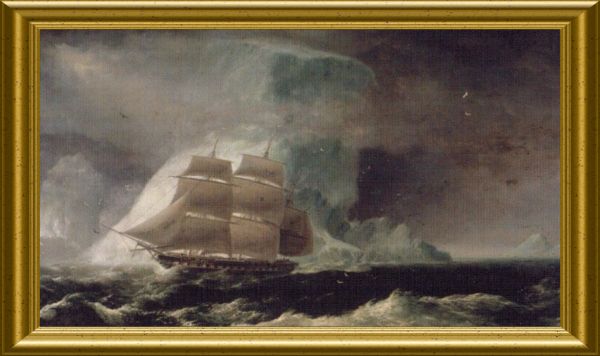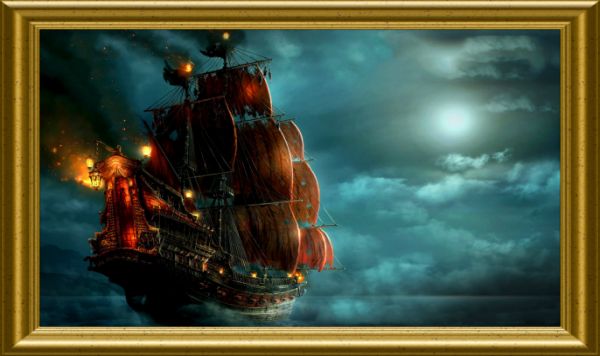


The Horrifying Tale of the Ghost Ship Palatine.










Ghost Ship Palatine
The Horrifying Tale of the Ghost Ship Palatine.
The series of disasters began innocently enough when the Palatine (which was actually named Countess Augusta) departed from Rotterdam in August 1738. She was carrying 240 immigrants from the Palatine region of southwest Germany, along with a 14 man crew captained by Capt. George Long. She was headed for Philadelphia and Virginia.
Unfortunately, this voyage was to face many hardships during its travels across the ocean. It began with water that was contaminated which resulted in many of the passengers and crew becoming ill and some dying. As if the fates had some animus against the poor ship, she encountered stormy seas that pushed her off course toward the north. The events might have still righted themselves, but the Captain contracted the illness and soon died. First mate Andrew Brook took charge but did not have the experience that the Captain possessed. As supplies dwindled, he began to charge passengers for food rations thus increasing the ill will that was suffusing the ship. Brook tried to plot a course between Block Island and Long Island Sound. The fates then stepped in once again. A blinding snowstorm drove the ship aground on the northern tip of Block Island at Sandy Point.
There are several accounts of what happened next. The most gruesome version was related by Joseph P. Hazard to the poet John Greenleaf Whittier. In that version, the islanders lured the ship onto the shoals with a false light. They murdered the starving, freezing passengers. To hide their crime they set the Palatine afire and sent her out to sea. They hoped she would never be seen again. It was said that a passenger named Mary Vanderline was driven mad and refused to leave her possessions. She was last seen on the burning ship while screaming for help.
Whittier wrote a poem about this version in 1867 called the Wreck of the Palatine.
The legend affirms that every winter the ghost of the flaming ship Palatine can be spotted off the coast of Block Island. The screams of Mary Vanderline can often be heard carried in by the wind.
In 1811, Dr. Aaron C. Willey, a Block Island resident, described the Palatine Light.
The light, he wrote, looks like a blaze of fire six or seven miles from the northern part of Block Island. Sometimes it’s small, like the light from a distant window. Sometimes it’s as big as a ship and wavers like a torch.
He first saw it in February 1810.
"The people who have always lived here are so familiarized to the sight that they never think of giving notice to those who do not happen to be present, or even of mentioning it afterwards...
It was large and gently lambent, very bright, broad at the bottom and terminating acutely upward...
I saw it again on the evening of December the 20th. It was then small, and I supposed it to be a light on board of some vessel, but I was soon undeceived. It moved along, apparently parallel to the shore, for about two miles, in the time that I was riding one at a moderate pace."
Benjamin Congdon, born around 1788, gave a typical Puritan explanation for the apparition, according to folklorist Michael Bell.
"About the burning Palatine ship... I may say that I have seen her eight or ten times or more. In those early days nobody doubted her being sent by an Almighty Power to punish those wicked men who murdered her passengers and crew."
Whether this tale be true or false, the last stanzas from Whittier's poem still echo down the abyss of time.
For still, on many a moonless night,
From Kingston Head and from Montauk light
The spectre kindles and burns in sight.
Now low and dim, now clear and higher,
Leaps up the terrible Ghost of Fire,
Then, slowly sinking, the flames expire.
And the wise Sound skippers, though skies be fine,
Reef their sails when they see the sign
Of the blazing wreck of the Palatine!
Copyright 2016 - Created and Hosted by Werner W. Hager